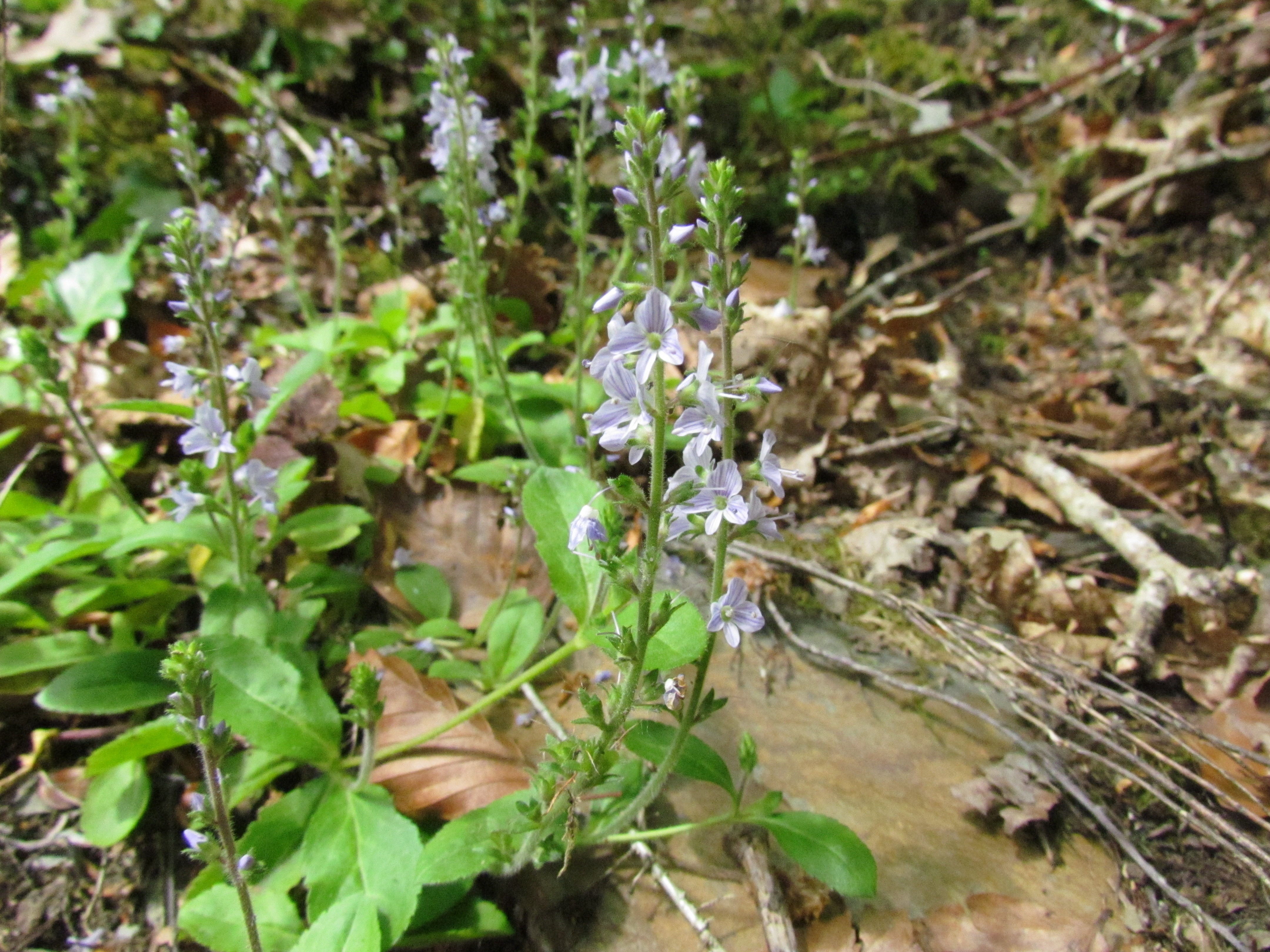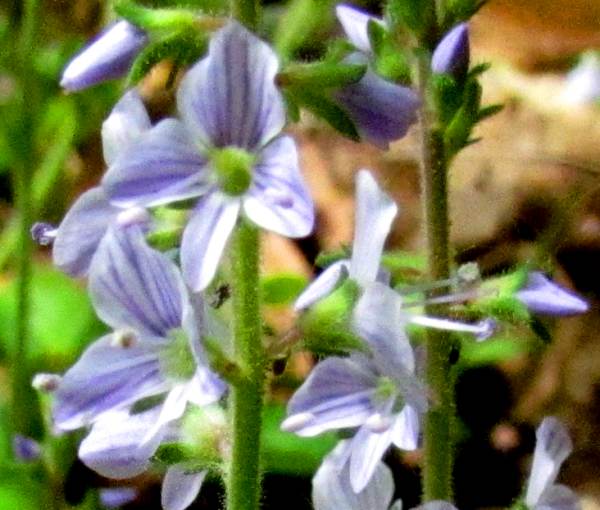Veronica officinalis L. - Heath Speedwell
Phylum: Magnoliophyta - Class: Equisetopsida - Order: Lamiales - Family: Plantaginaceae

Heath Speedwell is a low-growing upright perennial with pinkish-blue flowers (occasionally white)..
Description
With hairy stalked oval basal leaves, always in opposite pairs and visibly toothed, and smaller paired unstalked leaves along the stems, this common speedwell has finely hairy stems.Heath Speedwell grows to a height of typically 10cm. The small pale-blue to pinkish-mauve flowers are borne in tapering vertical spikes, and the four-lobed veined flowers are typically 7mm across.

Distribution
Heath Speedwell is perennial herb found throughout Britain and Ireland, and it is equally common throughout most of northern and central mainland Europe, becoming incleasingly localised towards the far south.
Habitat
This pretty little wildflower manages to grow in a variety of situations. We find it in acidic heaths, on woodland edges and in dryish grassy areas such as verges and waste land.
On steep banks beside shady roadside verges Heath Speedwell sometimes outshines even the Bluebells and Dog Violets with its abundance of cheerful blue flowers.
Similar species
There are many Veronica species and separating them requires careful inspection of many characters; for example Heath Speedwell is sometimes confused with Veronica filiformis, commonly known as Slender Speedwell or Creeping Speedwell.
Blooming Times
In Britain Heath Speedwell blooms from May until at least the end of August, but the most prolific displays are nearly always in June and July.
Taxonomic note
In the past the various speedwells (of which there are many in Britain and Ireland) were classified in the family Scrophulariaceae. DNA analysis has shown that the vast array of species (some 5000 worldwide) formerly placed in the family Scrophulariaceae (the Figwort family) are not monophyletic (truly close relatives), and many genera have been transferred to other families within the Lamiales - some, as with the speedwells, are now in the family Plantaginaceae (the Plantain family); others have joined the broomrapes within the Orobanchaceae; but several new families have also been set up to accommodate groups of former 'Scrophs'.
Uses
The leaves of various speedwell plants have been used in the past to make an expectorant tea for treating bronchial congestion and asthema.
The common name Speedwell may also be a reference to the claimed rapid effectiveness of this genus of plants when used as a medication.
Etymology
Speedwells were considered lucky charms, their sight speeding travellers on their way. Veronica, the genus name, probably comes from the Latin adjective vera- meaning true, and -nica meaning image. When St. Veronica wiped Christ's forehead on they way to his crucifixion on Mount Calvary, an image of his face was said to have been left on the cloth she had used.
The specific epithet officinalis indicates that nthis plant was considered to have medicinal properties.
Similar Species
Brooklime Veronica beccabunga grows in the edges of streams and ditches; it has thick stems, dark green leaves and sparse flowers.
The plants shown on this page were photographed in Wales.
Sue Parker's latest ebook is a revised and enlarged second edition of the acclaimed Wildflowers in the Algarve - an introductory guide. Full details here...
Buy it for just £3.95 on Amazon...
Please Help Us: If you have found this information interesting and useful, please consider helping to keep First Nature online by making a small donation towards the web hosting and internet costs.
Any donations over and above the essential running costs will help support the conservation work of Plantlife, the Rivers Trust and charitable botanic gardens - as do author royalties and publisher proceeds from books by Pat and Sue.



